“What is an ebike?” is a question that might be crossing your mind as you hear about them more often in today’s age of sustainable transportation.
An ebike, short for an electric bike, is a bicycle that is equipped with an electric motor, used for propulsion. It blends the benefits of a conventional bicycle with the added advantage of assisted cycling, enabling riders to travel longer distances and tackle tough terrains with less exertion.
In this blog post, we’ll delve deeper into the world of ebikes.
We will discuss their electric components, types, legality, how they’re changing the landscape of urban mobility, and what you should consider if you’re planning to get one.
So, if you’re curious to learn more about this innovative mode of transportation, keep reading below!
What Is an Ebike and What Is It Used For?
As mentioned briefly above, an ebike (or electric bike) is a bicycle equipped with an electric motor and rechargeable battery that assist the rider while pedaling. Some ebikes provide assistance only when the pedals are turning, while others have throttles and assist regardless of whether or not you’re pedaling.
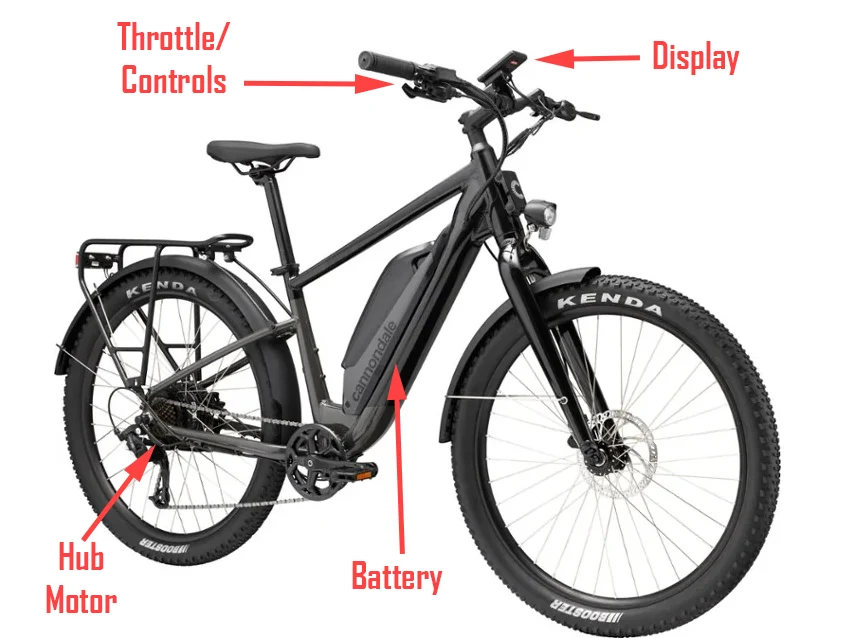
Cannondale Adventure Neo Allroad ebike with the main electric components depicted.
Electric bikes are a form of sustainable transportation, which is just one of the reasons why they have gained huge popularity in recent years. More and more people are replacing their cars with electric bikes for short and medium-long trips, especially in urban environments.
The electric motor allows you to conquer steep hills, ride long distances, carry heavy loads, and enjoy cycling a lot more. Moreover, ebikes are adaptable to individual fitness levels and preferences, so they can also be used for exercising by adjusting the level of assistance.
Ebikes also cater to a wide range of users, as they come in a variety of types, just like regular bikes.
Mountain bikers use them to climb steep hills with ease, commuters use them to travel without breaking a sweat, road cyclists use them to cover long distances, and riders of cargo ebikes use them to carry heavy loads.
But all of them use them to lower their carbon footprints, as ebikes contribute to reducing carbon emissions and promoting a healthier lifestyle.
Popular Types of Ebikes
Electric bikes come in a variety of types, each designed to suit a particular style of riding, just like regular bicycles. Here are some of the most popular ebike types that you should know about.
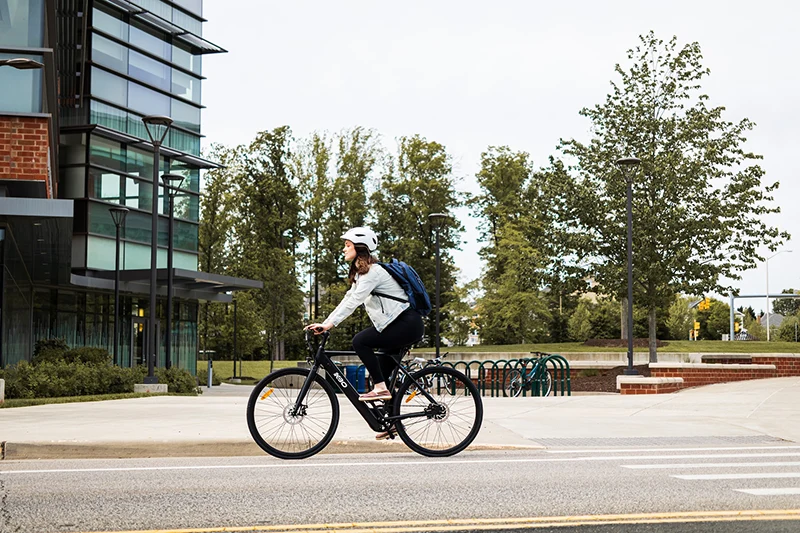
1. Mountain Ebikes
Electric mountain bikes are designed for off-road terrain. They feature rugged components, including wide tires, suspension (front or full), wide gear ranges, and powerful motors. Most models have mid-drive motors because of the high-torque they provide. High-end models are just as capable as traditional mountain bikes, so you can ride them on proper singletracks and enduro trails.
2. Road Ebikes
Road bikes are made for speed on smooth surfaces, so they prioritize lightweight components. They typically have small rear hub motors and integrated batteries, both of which are more limited than on other types. That’s because these road ebikes are designed to just provide an additional push when you get tired, to help you ride longer and climb hills with more ease.
3. Folding Ebikes
Folding electric bikes are all about portability and convenience. They are built around frames that fold down small and allow you to take them on public transportation, fit them inside your car trunk, or store them in confined places. They are typically used for commuting, especially if you need to combine cycling with public transportation.
4. Cargo Ebikes
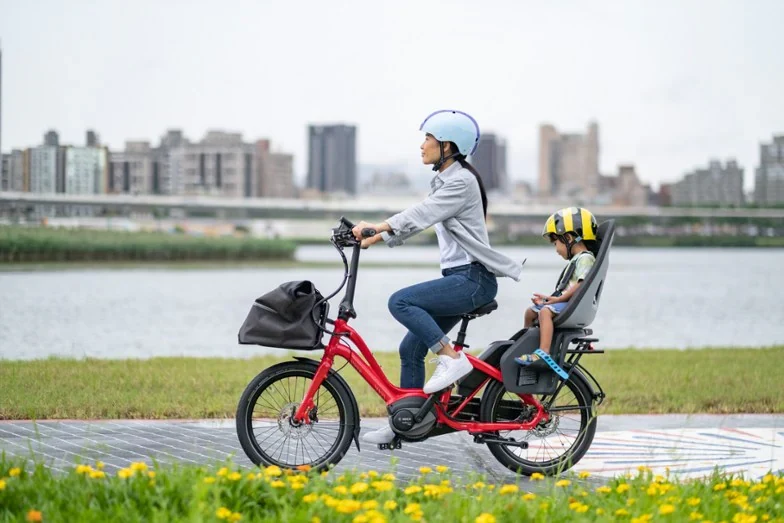
As you can imagine, cargo electric bikes are designed for carrying heavy weights. They have heavy-duty frames with integrated front and/or rear racks that allow you to carry up to 400+ lb of additional cargo. Most models have powerful mid-drive or rear hub motors with a lot of torque to help you climb more easily and start riding from a dead stop. Cargo ebikes are especially popular among families and in urban conditions.
5. Hybrid Ebikes
Hybrid ebikes are versatile machines that can be used for commuting, exercising, running errands, or riding for fun. They have frames that offer a relaxed riding position, which makes them great for use in urban environments with heavy traffic. They often come with accessories such as fenders, lights, and racks, so they can be used by a variety of riders.
6. City/Cruiser Ebikes
City and cruiser electric bikes are designed for comfort and style. They usually have step-through frames and swept-back handlebars that put the rider in a relaxed upright seating position. However, their geometry is often not ideal for prolonged pedaling, so they are best used for short and mid-distance rides.
Important Features of an Ebike
The Motor
The electric motor lies at the heart of every electric bike, as a crucial component that gives it all of its main benefits and distinguishes it from regular bicycles.
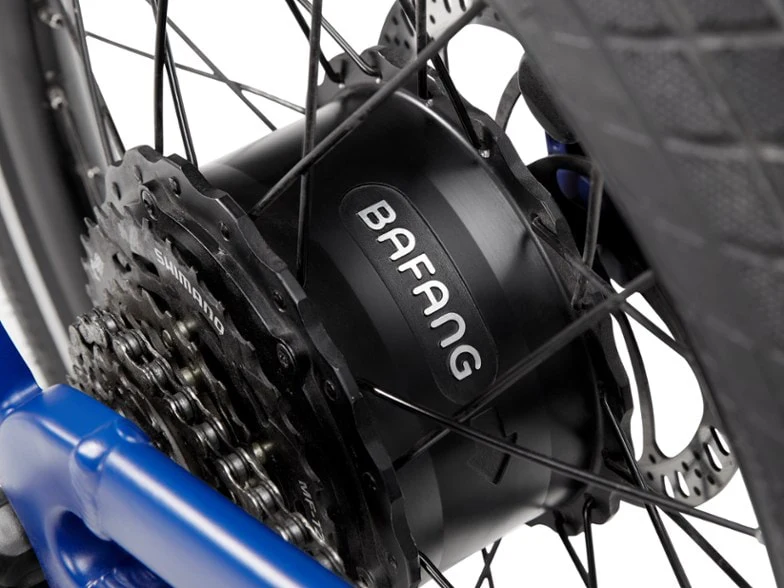
Bafang is one of the most popular manufacturers of rear hub electric bike motors.
The motor is responsible for providing electric assistance and helping you to climb hills with more ease, travel longer distances, maintain higher average speeds, and transform the overall riding experience.
Electric bike motors come in different types and placements, the two most popular of which are hub motors vs. mid-drive motors. Each comes with a set of unique advantages and disadvantages.
Hub motors are integrated into either the front hub or the rear hub (more popular of the two) and deliver electric assistance directly to the wheel. These motors are simpler, cheaper, and easier to maintain, so they are usually seen on more affordable electric bikes. They are also easier to retrofit to existing bikes, so they are an integral part of electric bike conversion kits.
Mid-drive motors are positioned near the bike’s bottom bracket, offering several advantages for mid-drive electric bikes. This design centralizes the motor’s weight and lowers the center of gravity, which greatly improves balance and handling. Moreover, mid-drive motors efficiently leverage bike’s gears, which results in better torque and a more natural ride feel. This is especially beneficial when riding off-road or climbing steep hills.
The Battery
The battery is another essential component of every electric bike. Electric bike batteries provide the necessary juice that powers the motor, which makes it the powerhouse of every ebike.
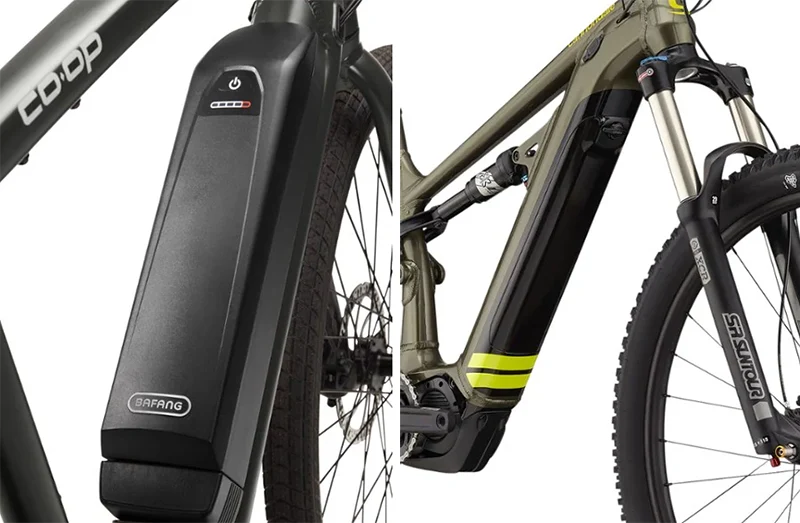
Frame-mounted vs. integrated ebike battery.
Modern electric bike batteries are typically made with lithium-ion technology, which has a high energy density, lightweight nature, and reliable performance. The capacity of the battery is measured in watt-hours (Wh) and determines the range on a single charge.
The larger your ebike battery, the more range your ebike will have, so you want to have enough capacity for your needs. Most ebikes batteries have between 300 Wh and 1000 Wh of capacity. Keep in mind that the battery is one of the heaviest components on any ebike, so the added weight is an important tradeoff.
Ebike batteries can be positioned on the down tube, on the rear rack, or integrated inside the down tube. Bikes with batteries hidden inside the frame look sleek and modern, but typically cost a bit more.
The Range
In the context of electric bikes, the range refers to the distance you can travel on a single full battery charge. Understanding how much range your ebike has is pretty important, as it will help you plan your rides better and help you avoid running out of juice.
The range of an electric bike depends on a lot of factors, the most important of which is the size of the battery. The bigger the battery, the longer you can ride on a single charge.
However, the range is also determined by the weight of the ebike, rider and cargo, the terrain, incline, wind, temperature, and so on. All of these things affect the performance of the battery and, subsequently, the range.
An ebike’s range, or the distance it can travel on a single charge, depends on factors such as battery size, rider and cargo weight, terrain, and more, with models offering from 20 to over 100 miles per charge.
Entry-level electric bikes usually offer a range of around 20-40 miles (32-64 kilometers), while mid-range models can reach 40-80 miles (64-128 kilometers). Premium electric bikes, equipped with high-capacity batteries and advanced technology, may achieve ranges beyond 80 miles (128 kilometers). Some highly-efficient ebikes, as well as dual battery electric bikes, offer even 100+ miles of range per charge.
Keep in mind that most electric bike brands give higher-than-real range estimates that you can only achieve if you ride in low pedal-assist modes and use the throttle minimally.
Pedal-Assistance and Throttle
Pedal assistance and throttle are the two main electric bike modes that allow you to utilize an ebike to help you increase your average speed, cover longer distances, and climb steeper hills.
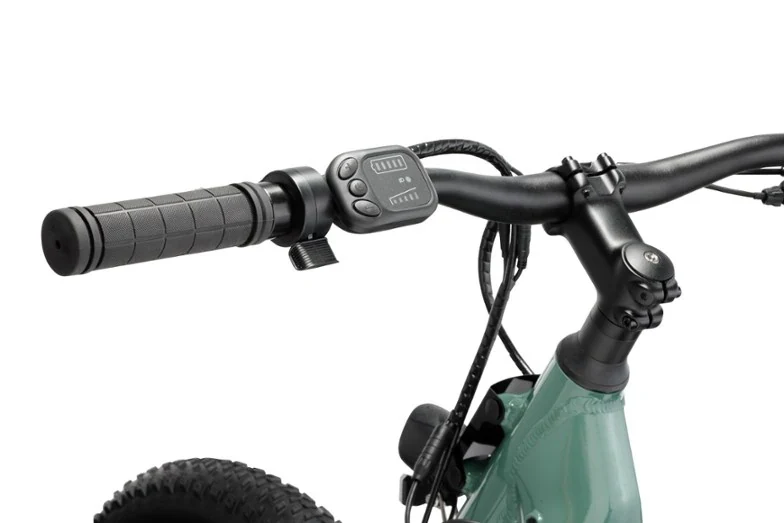
Thumb throttles are becoming more and more popular on electric bikes, replacing the less practical twist throttles.
Pedal assistance, also known as pedal assist or PAS, is a mode found in all electric bikes that works by detecting the rider’s pedaling motion and amplifies their efforts by activating the electric motor.
Pedal assistance is controlled by selecting pedal assist levels, which most ebikes have between 3 and 5. The higher the level you select, the more assistance the motor will provide and the faster you will go. Lower levels provide a gentler push, resembling a tailwind, while higher levels offer more powerful assistance, especially helpful when climbing steep hills or tackling challenging terrains.
On the other hand, some electric bikes also feature a throttle that allows the rider to activate the motor independently of pedaling, like on a motorbike. Electric bikes with a throttle are especially useful in situations where an instant burst of power is needed, such as when starting from a dead spot or climbing a steep hill.
The choice between the two depends on your personal preference, as using the throttle only provides a break from pedaling while using pedal assistance offers a more authentic cycling experience and preserves battery.
The Sensors
The sensors on an electric bike are the main way the motor communicates with the rest of the components. The sensors analyze the rider’s pedaling input, which activates the motor and provides assistance. The two main types of ebike sensors are cadence and torque sensors.
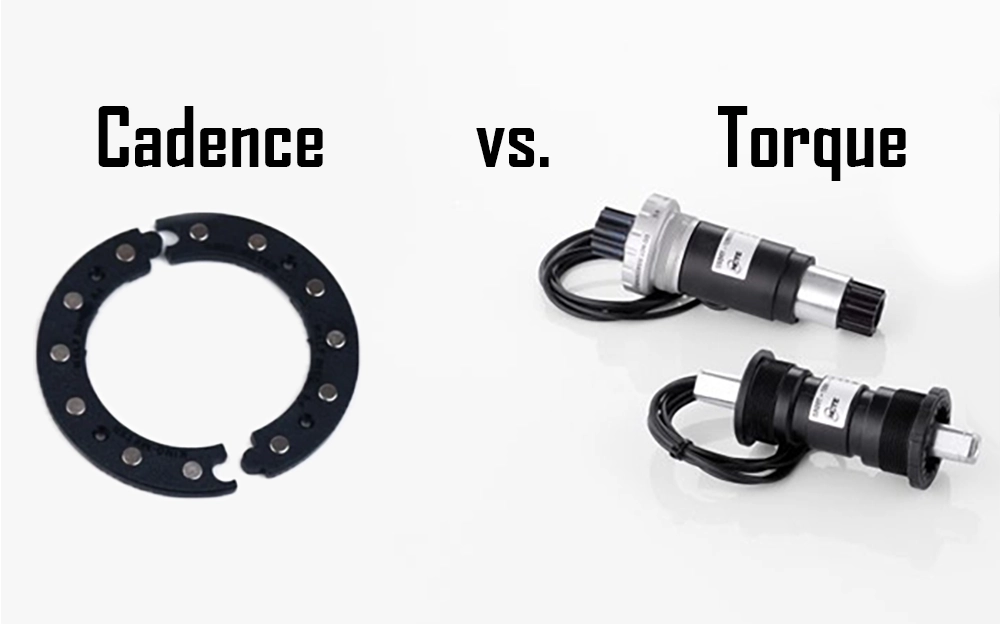
Cadence sensors are more rudimental and they monitor the rotation of the bike’s pedals. They determine how fast or slow the rider is pedaling and send this information to the motor. Based on that and the selected level of assistance, the motor activates and amplifies your efforts.
Torque sensors are more advanced and monitor how hard you are pedaling. As a result, they offer a smoother, more responsive, and more natural biking experience. By measuring how hard the rider is pedaling, the motor can precisely match the rider’s effort, providing natural, proportional assistance.
The choice of torque vs. cadence sensors influences the overall feel and riding experience, so it’s not something you should take lightly.
Cadence sensors are cheaper and work as an on-off switch for the motor, so they are great for riders who don’t want to pedal too much. Torque sensors, on the other hand, are perfect for those who want to be able to ride their ebike as a normal bike and get a good exercise out of it from time to time.
The Classes
In the US, electric bikes are categorized into three ebike classes based on three main criteria: top speed, type of assistance, and motor power. At the moment of writing this blog post, 40 out of 50 US states have enacted the three-class ebike law. These classes are:
- Class 1: These ebikes are equipped only with a pedal-assist system, which means that they can’t have a throttle. The maximum motor power is 750W and the maximum assisted speed is 20 mph.
- Class 2: These ebikes come with a throttle in addition to having pedal assistance. This means the rider can activate the motor without pedaling, by twisting the throttle lever. The maximum assisted speed for both throttle and PAS is 20 mph and the maximum motor power is 20 mph.
- Class 3: Speed pedelecs, as class 3 ebike are also called, have a maximum assisted speed of 28 mph. They feature pedal assistance only, just like class 1 ebikes, but some manufacturers also include a throttle that you can take on and off, depending on where you’re riding.
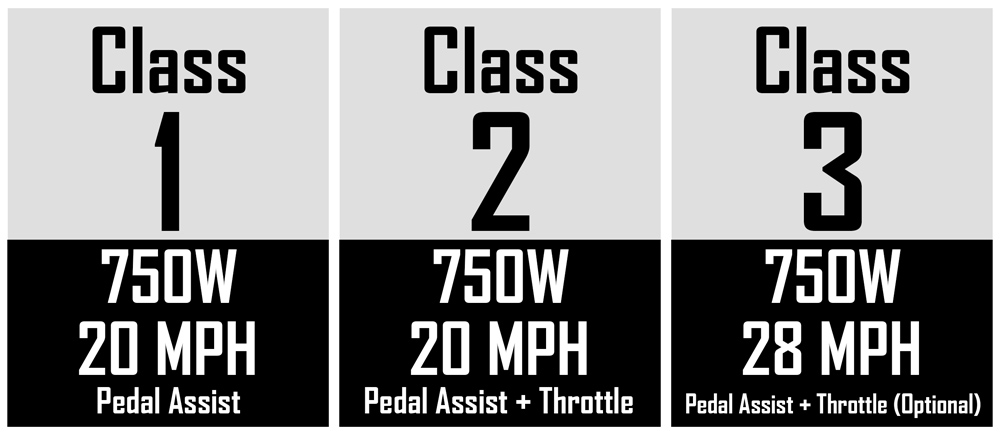
An important question to ask here is whether on not you need a license to ride an ebike. If you’re based in the US and you’re riding an ebike that falls into one of these three classes, you do not need a license. But, if you want to ride a 1000W electric bike with a 28+ mph top speed on public roads, you’ll need to register it and obtain a valid license.
Top Speed
The top speed of an ebike is determined by the motor, battery, and local ebike laws. Most ebikes have limitations in place that make sure the top speed does not exceed the legal maximum determined by local regulations.
For example, in the UK, the maximum allowed speed for ebikes is 15.5 mph. In the US, as explained above, the maximum allowed speed varies between 20 mph and 28 mph, depending on the class of your ebike.
However, ebikes can go faster than that on private land and off-road terrain, away from public roads. That’s why some ebikes, such as the Juiced HyperScrambler 2, have a top speed of over 30 mph.
The fastest electric bikes on the market can go even faster than that, with some models reaching speeds as high as 50 mph (Delfast Top 3.0).
Cost and Maintenance of Riding an Ebike
When discussing the cost of an electric bike, it’s important to consider the cost of maintenance as well. In short, an electric bike doesn’t cost much more to maintain than a regular bicycle.
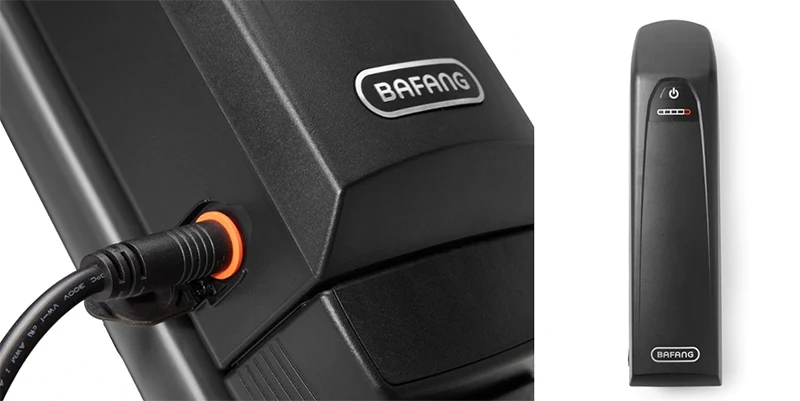
Replacing an ebike battery is the biggest cost you’ll encounter regarding ebike maintenance. Apart from all the other universal bike maintenance procedures.
Regular maintenance costs and procedures that apply to all bikes include replacing the tires when worn out, replacing brake pads, replacing drivetrain parts, and servicing the bearings. Depending on how much you ride, you’ll need to replace some of these components once a year and others once every few years.
The battery is an additional cost on ebikes, due to the fact that it loses its capacity over time. Most ebike batteries can last anywhere between 5-7 years (or 500-1000 charge cycles), depending on how much you ride. A replacement battery typically costs between $500 and $1,000 (depending on the brand and size), which averages to around $100 a year.
- Read more: How Long Does an E-Bike Battery Last?
Risks of Riding an Ebike
Electric bikes come with a few risks that potential new owners should be aware of, the three most important of which are increased speed, increased stopping distance, and ebike battery fires.
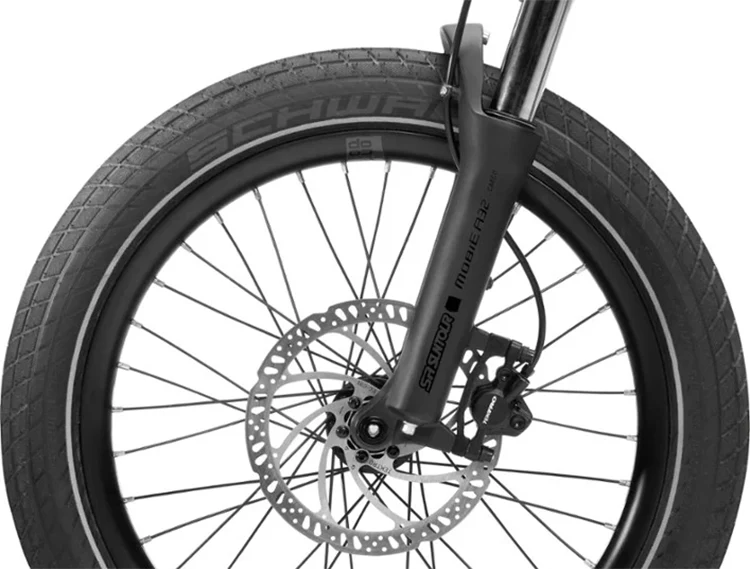
Most ebikes come with disc brakes, as they offer more braking power than rim brakes. The hydraulic disc brakes pictured above are the most powerful type.
Firstly, electric bikes are able to reach and maintain higher speeds than regular bikes. Class 3 electric bikes, also known as speed pedelecs, can maintain speeds of up to 28 mph (45 km/h), which are speeds that a peloton rides at during the Tour de France. This means that a potentially inexperienced rider can now cruise at dangerous speeds that they are not used to. That’s why you need to be cautious when riding an ebike, especially in dense city traffic, and preferably ride defensively.
Next, the weight of electric bikes is typically much higher compared to regular bikes (up to 2x or 3x), which in addition to the increased speed prolongs the stopping distance. That’s why most electric bikes come with powerful disc brakes. When stopping with a fast-going electric bike, especially one that comes with weaker mechanical disc brakes instead of hydraulic, make sure to give yourself enough time and space to come to a stop safely. Keep your distance from other vehicles and, again, ride defensively.
Despite ebike’s benefits, riders must consider risks like increased speed, longer stopping distances, and potential battery fires.
Finally, electric bike batteries are becoming notorious for catching fire, which is something to be aware of. Ebike battery fires usually occur with low-quality replacement batteries that are not compatible with the system they are installed to. Therefore, when replacing the battery, make sure to get one that is compatible with your ebike, preferably directly from the manufacturer. Also, never leave your ebike unattended when charging and never charge it in a place that would block your escape path in case a fire occurs.
Conclusion
As you can see, ebikes, with their electric motors and rechargeable batteries, offer a seamless blend of conventional cycling and power-assisted riding, perfect for navigating urban environments, climbing hills, or covering longer distances.
Their popularity stems from their adaptability to individual fitness levels, the variety of models catering to different uses, and their eco-friendly nature.
Essential features such as motor type, battery capacity, range, and pedal-assistance modes define the riding experience, making ebikes highly customizable.
Ebikes, blending conventional cycling with power-assisted riding, offer an enticing, customizable, and eco-friendly alternative to traditional modes of transportation.
Although there are some risks and maintenance costs, the benefits of using an ebike significantly outweigh the downsides.
As we move towards a more sustainable future, ebikes present an enticing alternative to traditional modes of transportation.
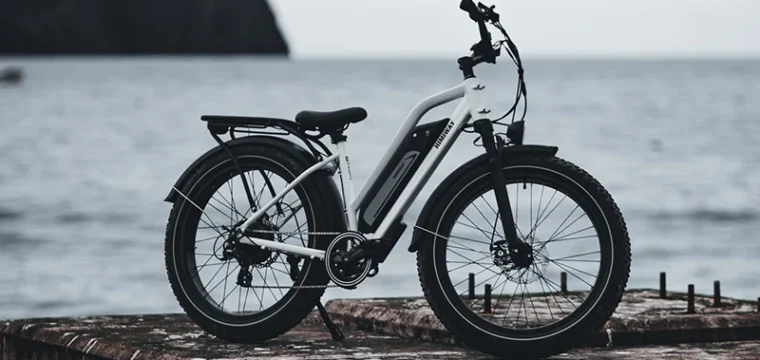
Your Feedback is Important!